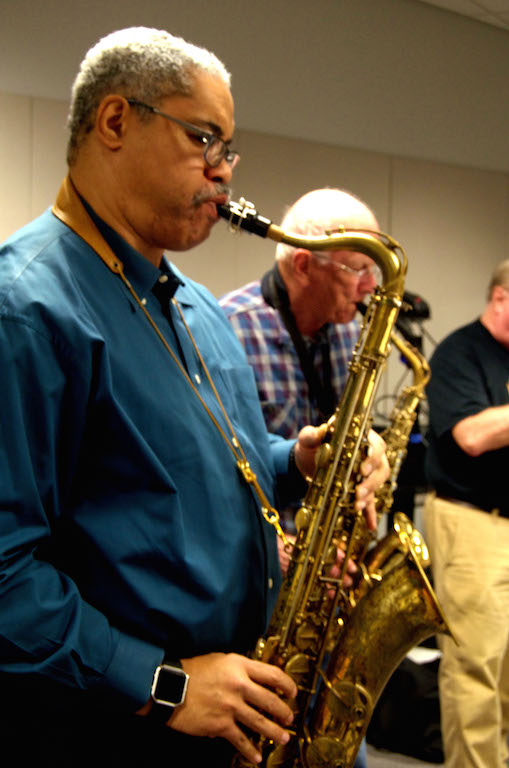Jazz ensemble ready for show
AACC Jazz Ensembles practice for three hours every Tuesday.
March 31, 2017
The preparation for a an AACC Jazz Ensemble per- formance includes more than just practice.
To put on a perfor- mance, the band reserves space in the Humanities Building theater, hires light and sound technicians, tunes the piano in the theater and gets yers and posters from the AACC Public Relations and Marketing Department.
Department Chair and Music Director for the AACC Jazz Ensemble Small Combo Dr. Ian Wardenski said he will incorporate a wide array of music into the next show.
“I start o with listening to a host of recordings just to get some ideas, some inspi- ration about what I want to perform this semester,” War- denski said. “I’m looking for an eclectic mix of music. So I might do something that is a collection of Duke Ellington’s music. I might do something that’s a collection of Antônio Carlos Jobim’s music. … All of that is fairly different.”
Wardenski said the va- riety is good for students and the audience as well.
Ronald Rex-Williams, a music major with a con- centration in piano, per- forms with the Small Com- bo band and the Big Band, another jazz ensemble. The concert the group put on before Christmas was Rex-Williams’ first live performance as a student.
“One of the first things our director does is match us up according to the tune, the difficulty level [of the musical piece], and the expertise of the instrumentalist,” Rex-Williams said.
“We meet … every Tuesday to practice. The first thing we do is sight read everything and run through it and see what happens.”
As the weeks progress toward the show, the sessions get more focused on the problem areas and per- fecting the sound and feel of the music, according to Rex-Williams.
“Last semester our songs were a little easier, but now they’re getting harder to do,” Williams said. “We listen to the recordings and try to match it. There is always sort of a blueprint. Then we can get the feel of it and interpret it.”












